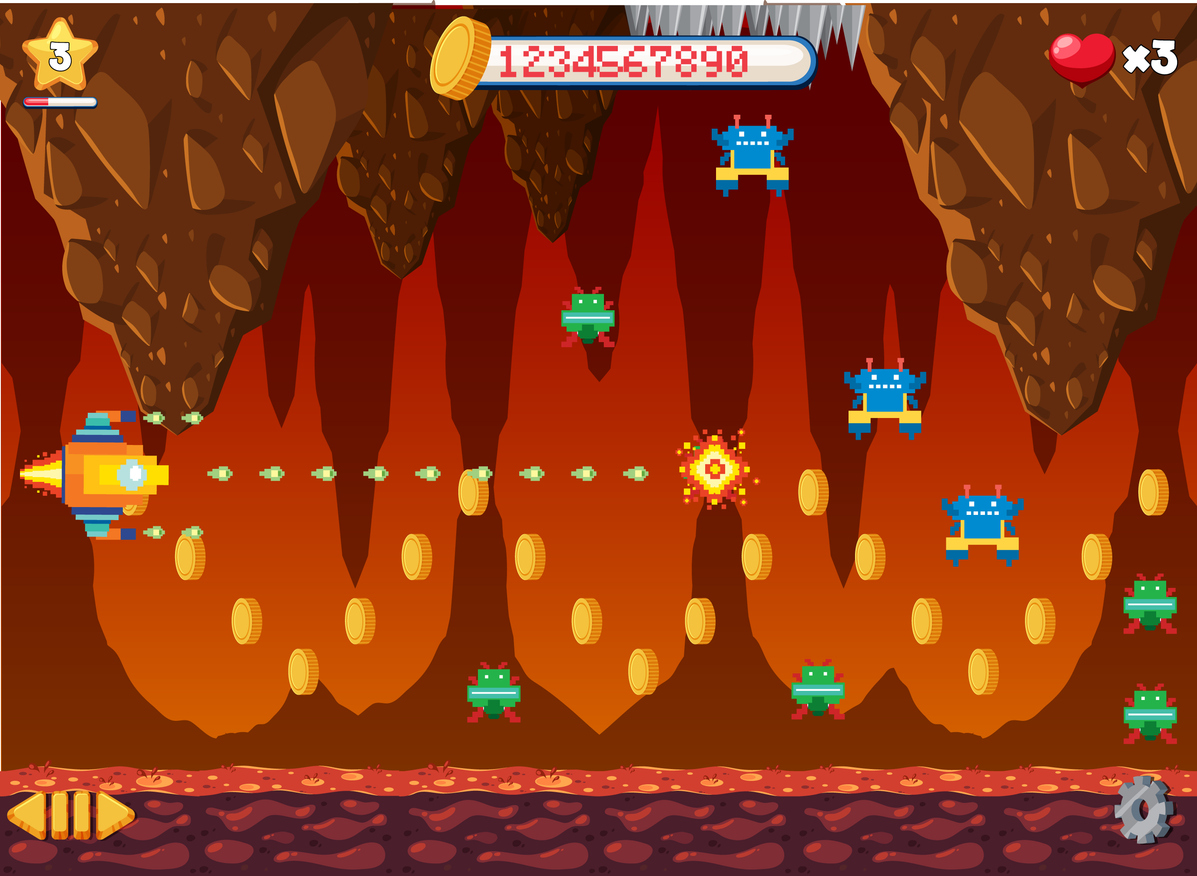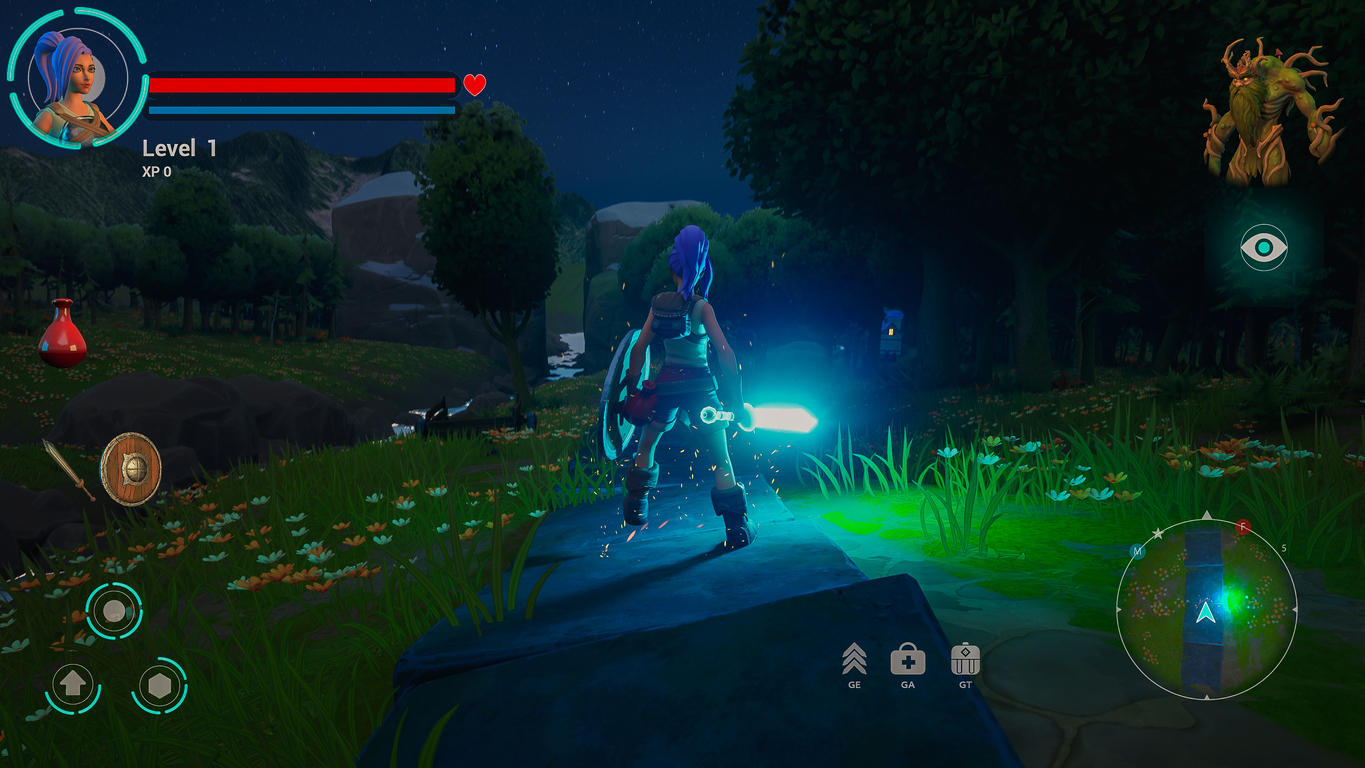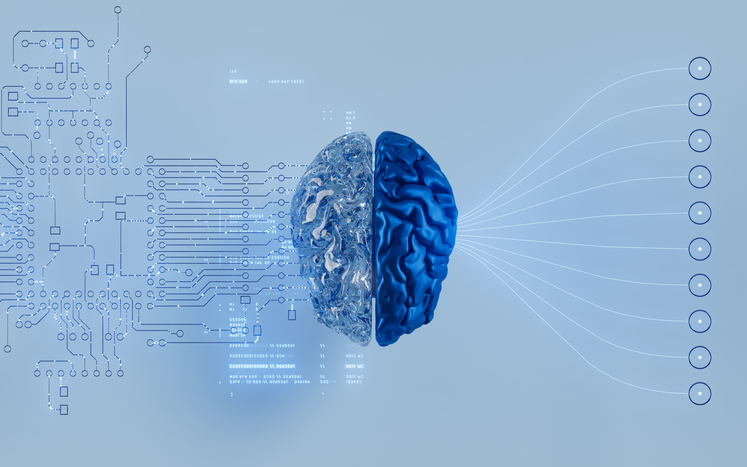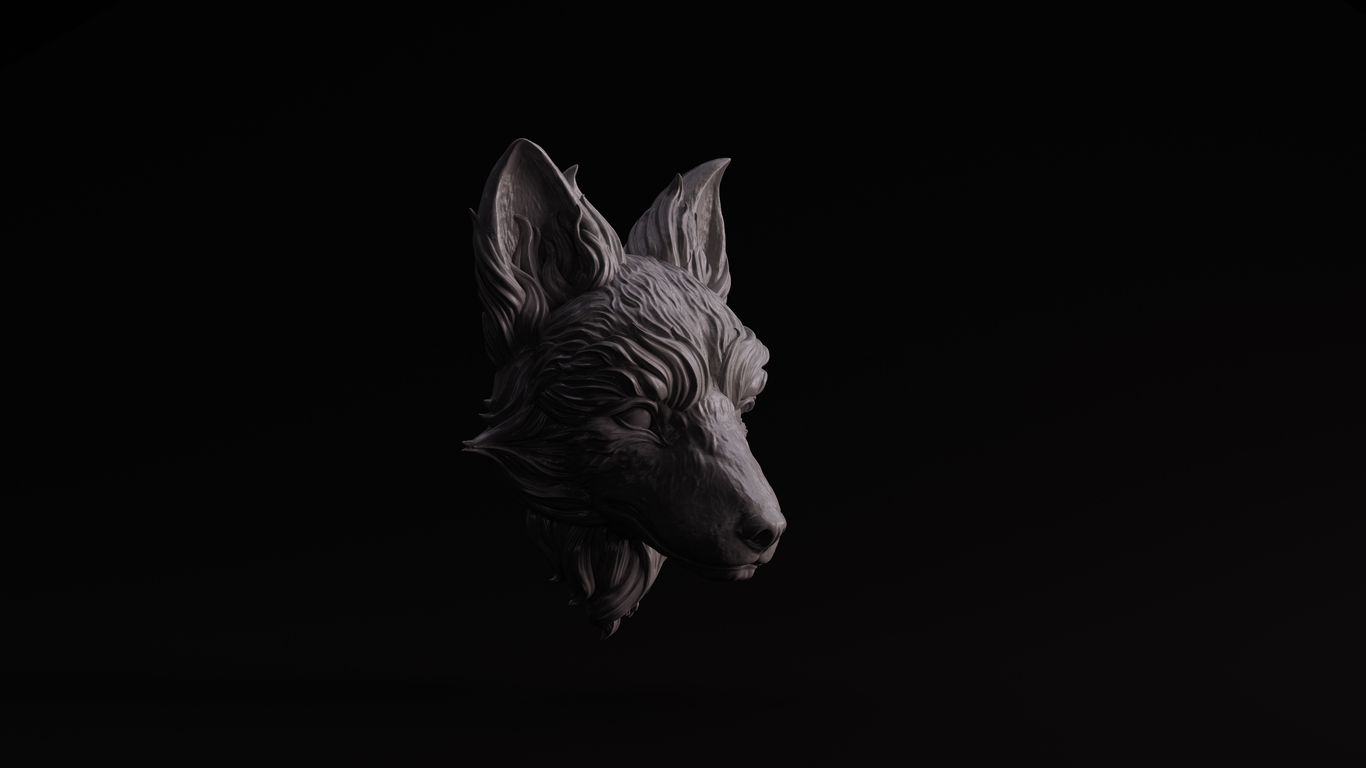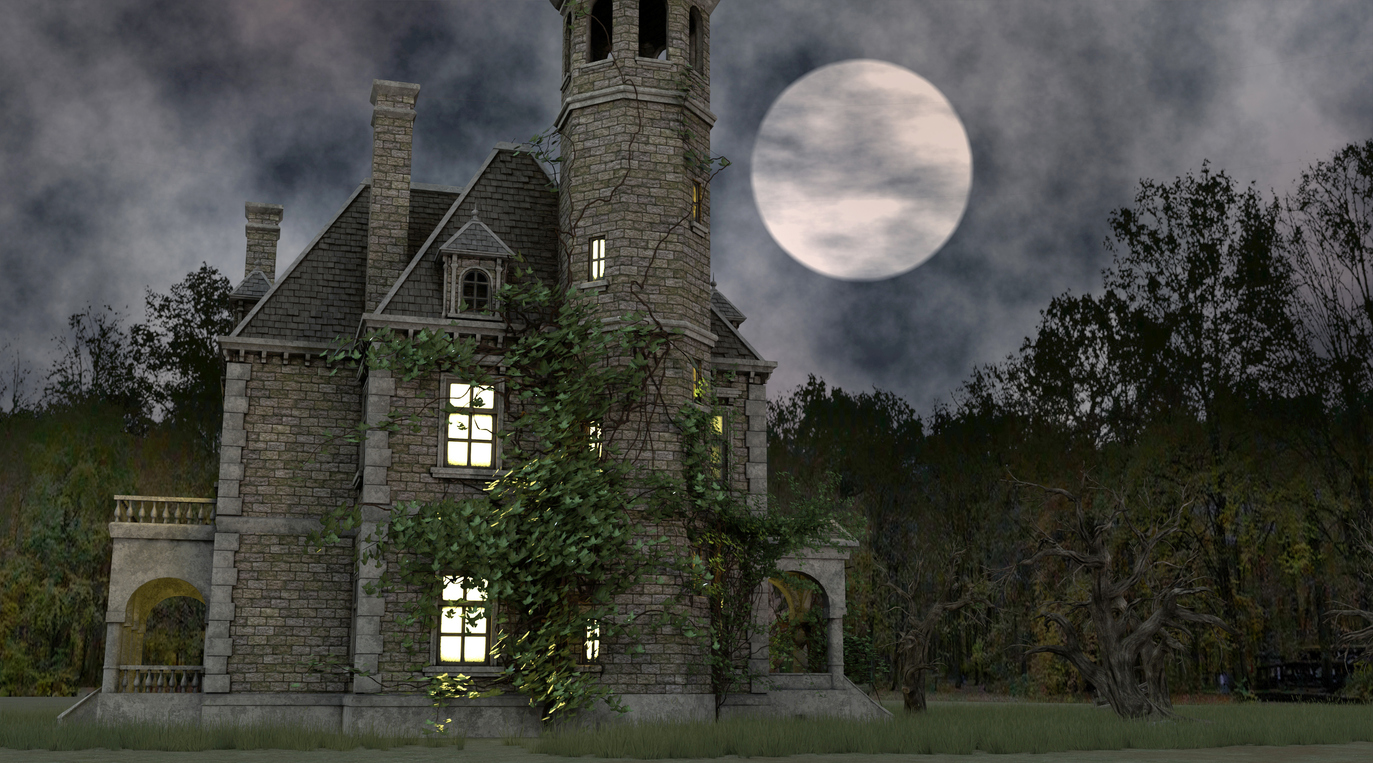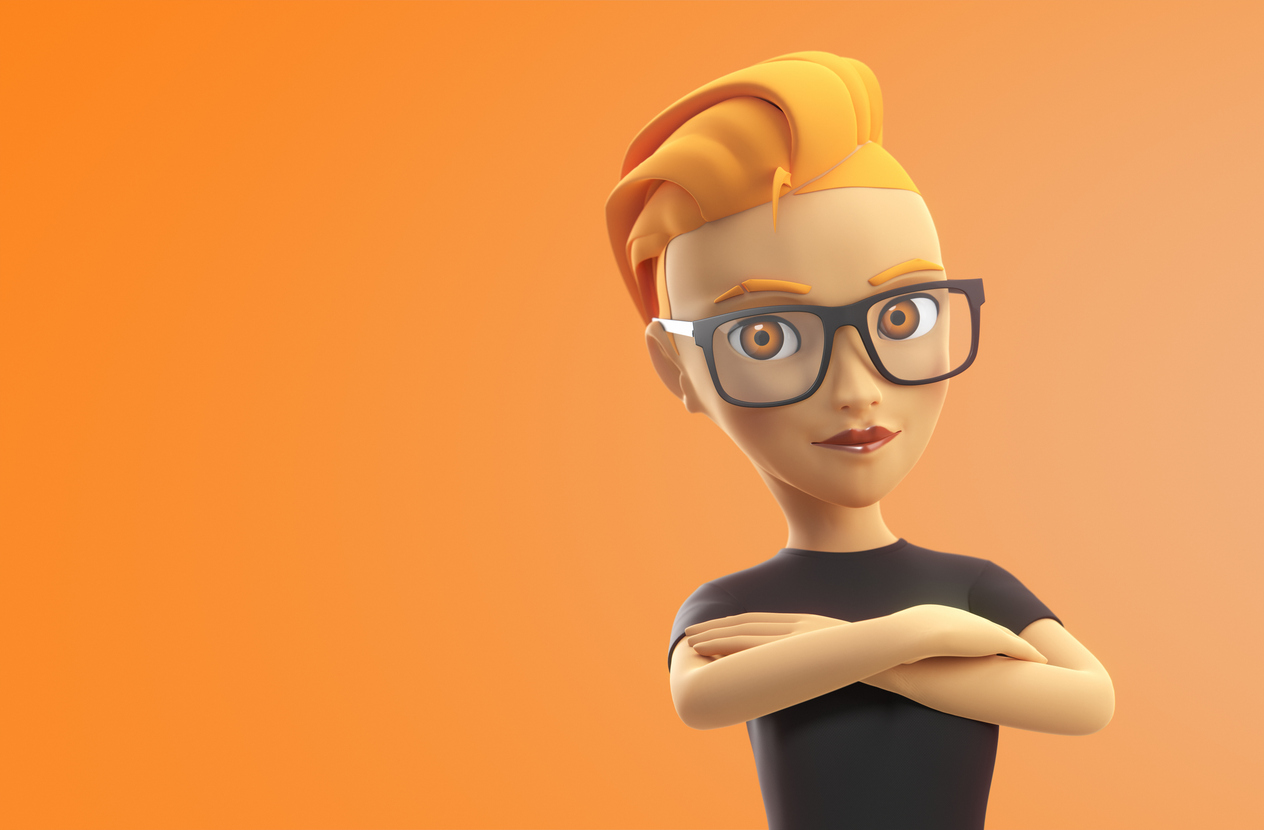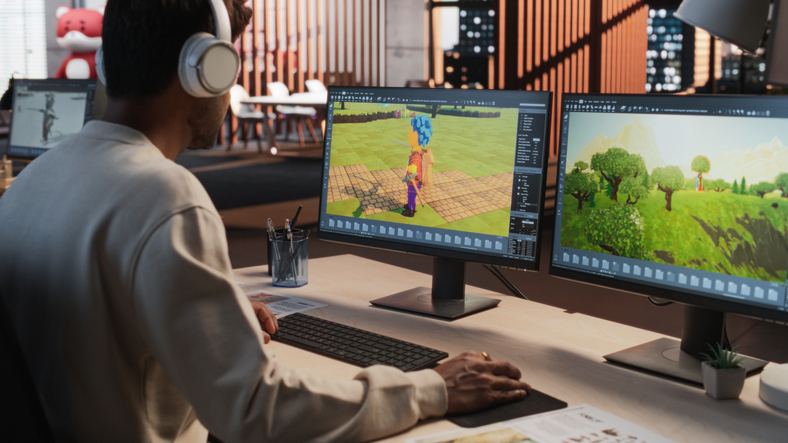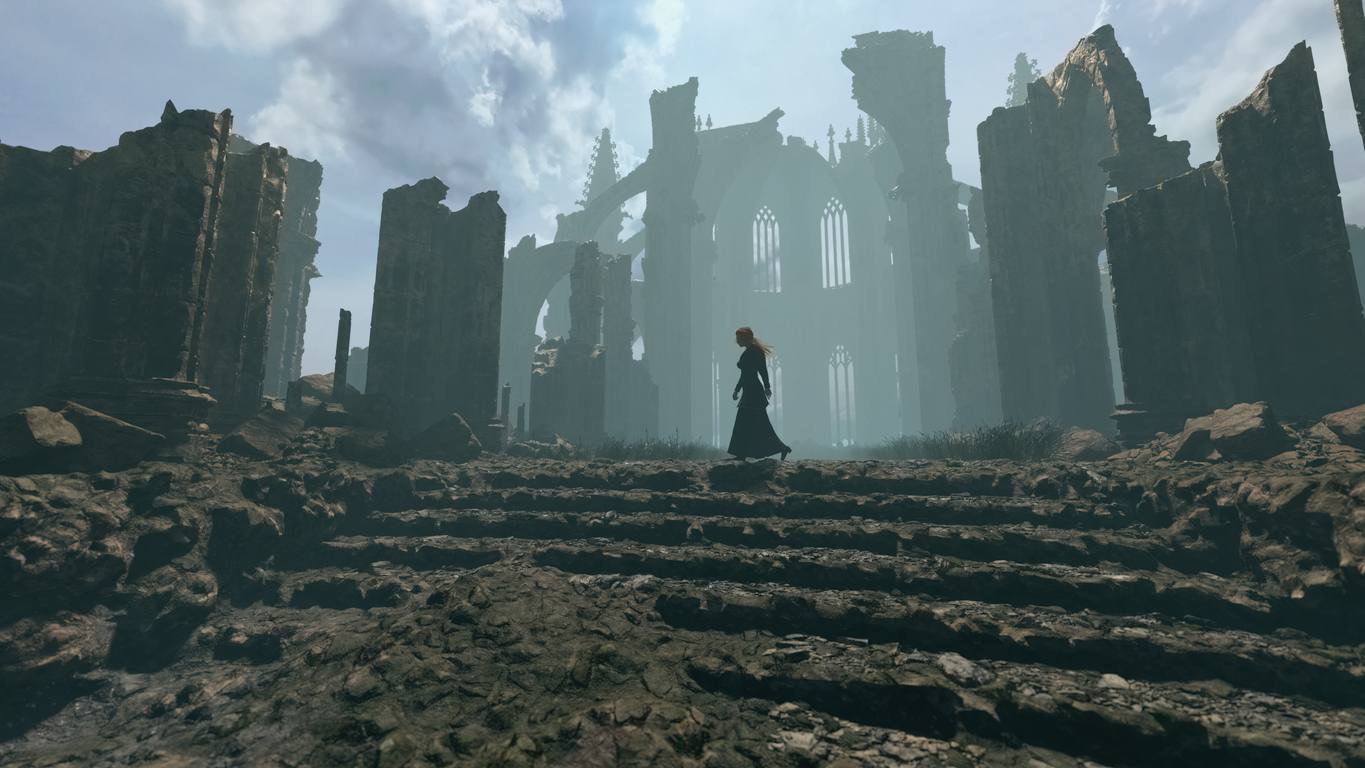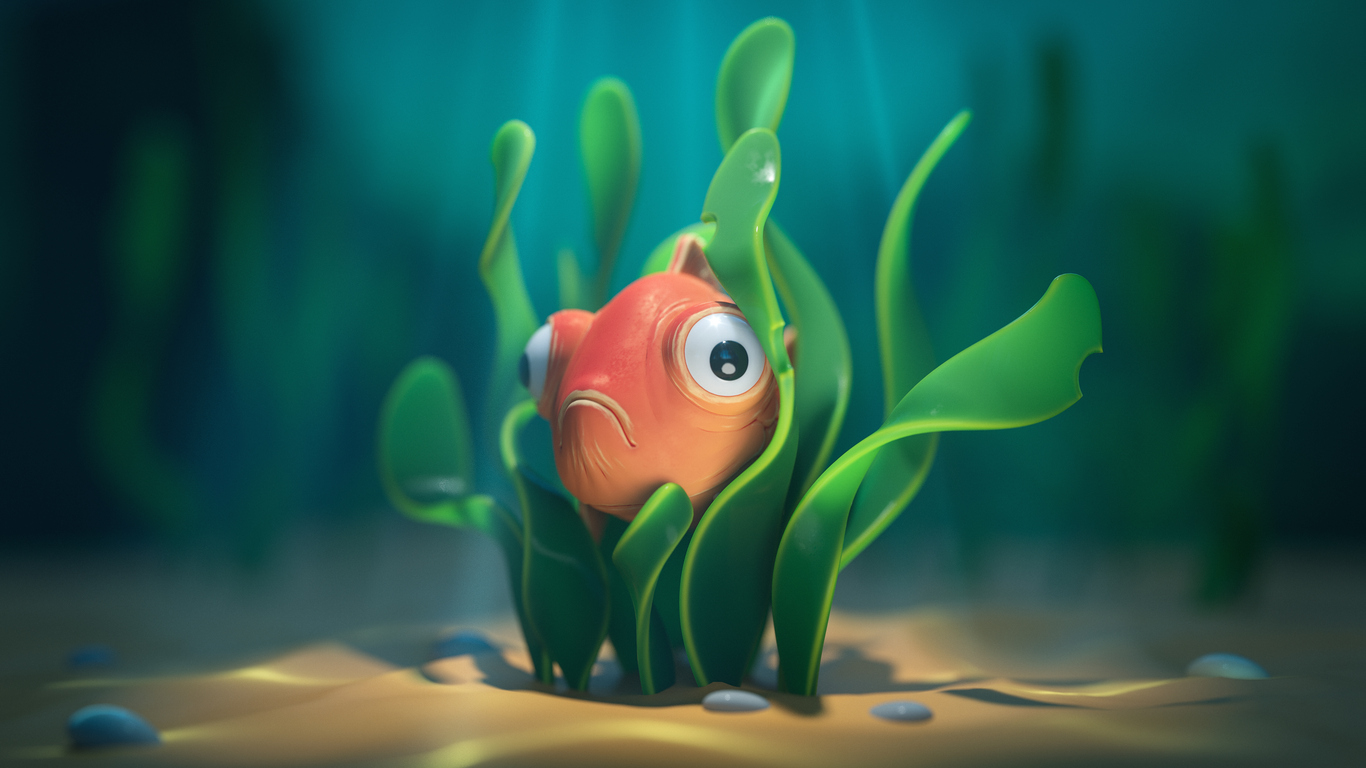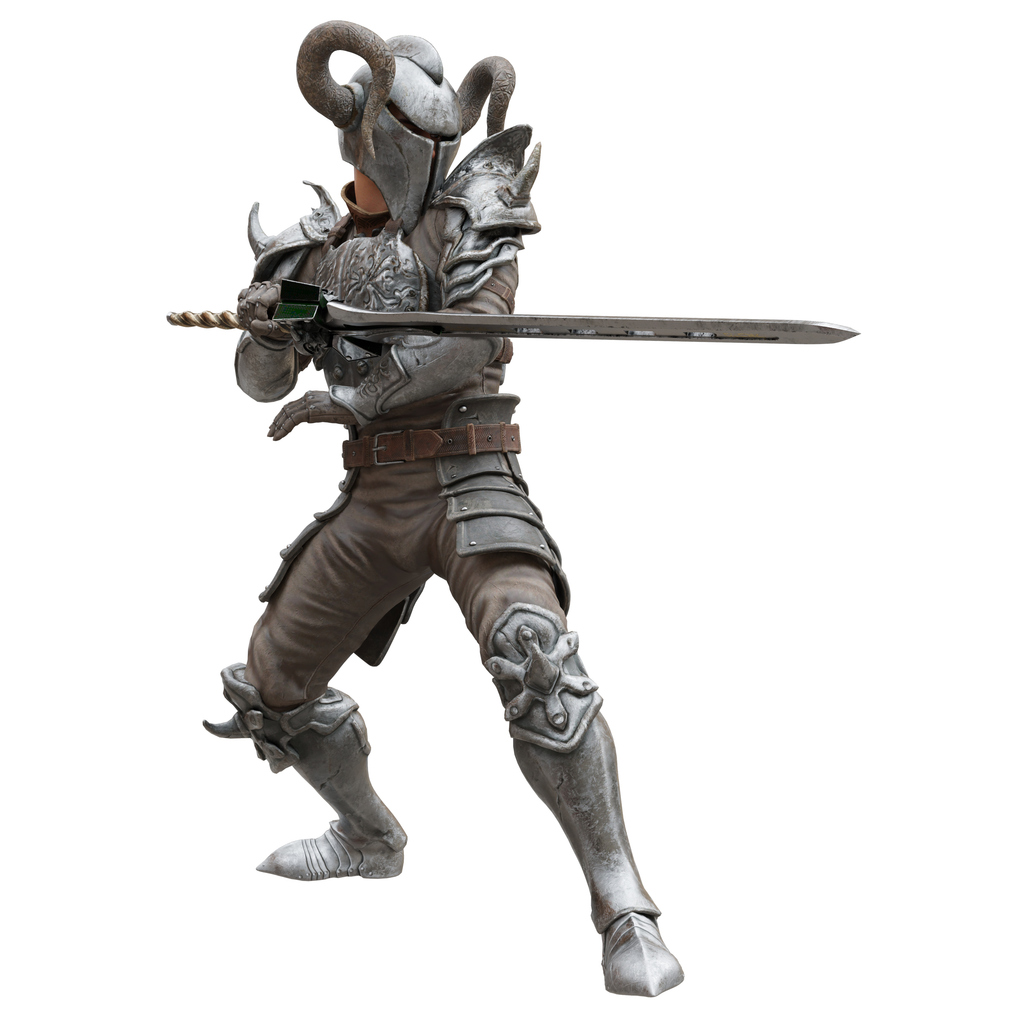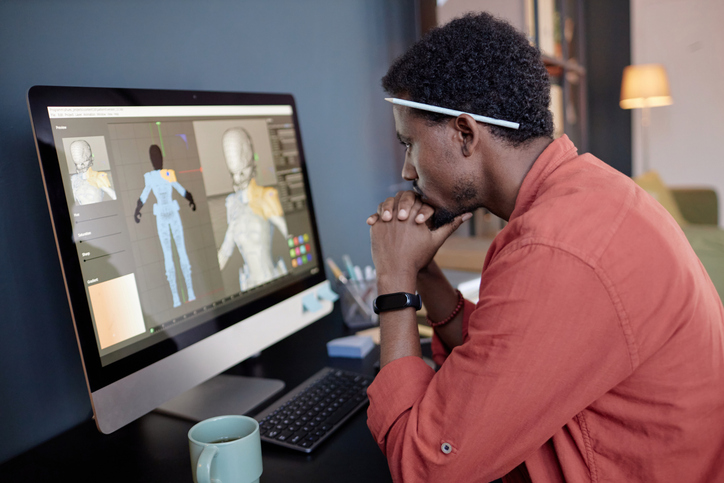In the captivating realm of digital storytelling and visual artistry, 3D animation has emerged as one of the most influential, exciting, and rapidly growing fields. Whether you are drawn to imaginative worlds, lifelike characters, stunning visual effects, or innovative video games, mastering 3D animation skills opens doors to countless creative and professional opportunities.
If you are considering stepping into the digital spotlight in 2025, you might wonder which tools you will need to create impactful 3D animation. In this article, we will explore the top five 3D animation software to learn in 2025 that will guide you toward achieving your creative goals. We will also cover some honorable mentions and introduce an excellent educational pathway: VCAD's 3D Modeling Animation Art and Design Program.
Let us dive in!
What is 3D Animation?
3D animation is the creative art of bringing digital objects and characters to life within three-dimensional spaces. Unlike 2D animation, 3D provides depth, allowing creations to appear more realistic and immersive. Using specialized software, animators' model, rig, texture, animate, and render virtual characters and environments, producing breathtaking results used extensively in films, video games, television, virtual reality (VR), augmented reality (AR), and advertising.
Software is vital for 3D animators. Choosing the right software not only helps you efficiently turn your ideas into reality, but it also impacts your overall animation experience and the quality of your work. Therefore, exploring and selecting tools that match your goals and expertise level is crucial.
Top Five 3D Animation Software to Learn in 2025
Let us take a detailed look at the top five animation software solutions you should consider mastering in 2025:
1. Autodesk Maya
Known as the gold standard in animation and widely used in major studios globally, Autodesk Maya is a robust and comprehensive 3D animation, modeling, and rendering software.
Key Features:
- Advanced rigging and animation toolsets
- Fluid and cloth simulations
- Bifrost system for realistic special effects
- Arnold renderer integration for photorealistic visuals
- Comprehensive scripting using Python and MEL
Advantages:
- Industry-standard software adopted by leading film and gaming studios
- Extensive library of assets, plug-ins, and scripts
- Regular updates and improvements based on user feedback
- Strong professional community and excellent online resources
Maya is ideal for ambitious creators aiming for careers in animation studios, film productions, or AAA game development.
Bonus Read: How to Learn 3D Animation from Scratch
2. Z-Brush
Z-Brush revolutionizes digital sculpting by providing intuitive yet powerful tools to craft hyper-realistic 3D models. Especially revered by character artists, Z-Brush emphasizes creativity and detail.
Key Features:
- Dynamic digital sculpting and painting
- Real-time interactive tools for intricate details
- Multi-resolution modeling and powerful subdivision features
- ZRemesher tool for automatic mesh topology
Advantages:
- Unmatched precision and organic sculpting capabilities
- Intuitive and artist-friendly user interface
- Widely used for character modeling in films and games
- Easy integration with other major animation software
For artists driven by characters and details, Z-Brush offers the freedom and depth needed to create genuinely breathtaking models.
Bonus Read: How Long Does It Take to Learn 3D Animation?
3. Houdini
If procedural animation and dynamic simulations pique your interest, Houdini is a software you cannot miss. Known for its unparalleled procedural generation capabilities, Houdini is perfect for producing complex visual effects efficiently.
Key Features:
- Node-based workflow for flexibility and efficiency
- Advanced tools for particle, fluid, smoke, and fire simulations
- Procedural animation systems allowing for rapid adjustments
- SideFX Labs toolset for streamlined creation and experimentation
Advantages:
- Industry-leading software for special effects and simulations
- Highly customizable and adaptive to user needs
- Exceptional procedural modeling capabilities
- Significant demand in high-end production environments
Houdini offers endless possibilities, particularly for aspiring VFX artists interested in film, television, and gaming industries.
4. Unreal Engine
Developed by Epic Games, Unreal Engine is famous for real-time rendering and animation. Primarily celebrated within the gaming industry, Unreal Engine has increasingly crossed over into animation and filmmaking, facilitating groundbreaking creative projects.
Key Features:
- Real-time 3D rendering capabilities
- Advanced physics engine and simulation tools
- Robust character animation and motion-capture integration
- Blueprint visual scripting for rapid prototyping
Advantages:
- Immediate visualization of animated scenes with real-time rendering
- Broad compatibility and cross-platform publishing options
- Powerful, intuitive tools suitable for game design and cinematic productions
- Free to download, making it accessible for beginners and small studios
For those attracted to game development, real-time interactive experiences, or AR/VR animations, Unreal Engine is an outstanding choice.
5. Blender
As a powerful, free, open-source software solution, Blender stands out as an accessible yet professional choice for 3D animation. Blender is popular among beginners and seasoned professionals, thanks to its comprehensive features and supportive community.
Key Features:
- Complete 3D modeling, rigging, animation, and rendering suite
- Grease Pencil feature for unique 2D/3D hybrid animation
- Real-time Eevee renderer alongside photorealistic Cycles renderer
- Extensive customization and scripting capabilities
Advantages:
- Free and open source with a continuously growing community
- Regular updates featuring significant improvements
- Comprehensive tutorials and resources available online
- Strong flexibility across different animation styles and projects
Blender empowers independent creators, hobbyists, and beginners, offering professional-quality tools without financial barriers.
Bonus Read: The Career Path of a 3D Animator: How to Get Started
Few Other Software for 3D Animation (Honourable Mentions)
Beyond our top five selections, the world of 3D animation software is rich and diverse, offering numerous excellent tools that cater to different niches and specialties. Here are several more noteworthy programs worth exploring:
3ds Max
A staple in architecture, game design, and visual effects, 3ds Max is celebrated for its user-friendly interface, powerful modeling capabilities, and comprehensive rendering tools. It excels at creating detailed environments and intricate animations, making it ideal for professionals working on architectural visualizations, complex character animations, and gaming projects.
Cinema 4D
Cinema 4D stands out for its ease of use, especially in motion graphics, advertising, and visual effects. It is particularly favoured by graphic designers transitioning into 3D animation due to its intuitive interface, robust procedural workflows, and seamless integration with Adobe After Effects. Its ability to handle complex animations with simplicity has made it a preferred choice for designers seeking accessible yet powerful animation tools.
iClone
iClone is ideal for beginners and indie creators interested in real-time 3D animation and character creation. Its approachable interface, quick workflows, and extensive library of pre-made assets and animations make it an attractive option for creating animated shorts, virtual reality experiences, and interactive media. iClone also excels at facial animation and motion capture integration, allowing creators to produce lifelike animations effortlessly.
Daz 3D
Known primarily for character modeling and rendering, Daz 3D offers an extensive library of customizable models, props, and environments. Its user-friendly interface is perfect for beginners who wish to focus on character posing and morphing. While it might not match the capabilities of software like Maya or Blender in professional animation studios, Daz 3D is excellent for hobbyists and indie artists looking to quickly create appealing characters and animations.
RenderMan
Developed by Pixar, RenderMan is a powerhouse in photorealistic rendering and visual effects, widely used in blockbuster films and animation projects. It seamlessly integrates with major 3D animation software like Maya, Houdini, and Blender, providing unparalleled realism through advanced shading, lighting, and rendering technologies. RenderMan is the ideal choice for animators and studios aiming to achieve cinematic-quality visuals.
Marmoset Toolbag
Marmoset Toolbag is an intuitive real-time rendering and animation software, primarily used for previewing 3D models, textures, and animations with exceptional detail and accuracy. Popular among game developers and character artists, it offers excellent capabilities for creating visually stunning real-time renders, making it particularly valuable in showcasing portfolios, games, and interactive projects.
Substance Painter and Substance Designer
These Adobe-owned software tools are specialized for creating high-quality textures and materials essential to realistic 3D animations. Substance Painter excels in intuitive 3D painting workflows, while Substance Designer is unparalleled in procedural texture generation. Both tools integrate smoothly with animation pipelines, enhancing the quality and realism of final animations.
Each of these honourable mentions brings unique strengths and specialties, perfectly tailored to specific projects, styles, and industry needs, broadening the horizons of what can be achieved in 3D animation.
VCAD’s 3D Modeling Animation Art and Design Program
Beginning your journey into 3D animation requires both passion and professional guidance. Investing in specialized education not only sharpens your technical skills but also enhances your creativity and opens numerous career opportunities. VCAD’s 3D Modeling Animation Art and Design Diploma Program is specifically designed to support aspiring animators and digital artists in their journey towards mastering 3D animation and design.
The program, certified by the Registrar of the Private Training Institutions Regulatory Unit (PTIRU) of British Columbia, emphasizes comprehensive online training that combines flexibility, personalized learning, and hands-on experience. Students engage with industry-standard software used in top animation studios, ensuring they develop highly relevant skills and techniques. Software training includes:
- Autodesk Maya for advanced 3D modeling, animation, and rigging
- Unreal Engine for real-time rendering, game development, and immersive interactive media
- Z-Brush for digital sculpting and high-detail character modeling
- Houdini for procedural generation, special effects, and complex simulations
- Substance Painter and Substance Designer for realistic material and texture creation
- Adobe Photoshop and After Effects for post-production, image editing, and animation enhancement
Throughout the program, students participate in immersive, project-based learning that helps them build a robust, professional-grade portfolio. By graduation, students possess both the practical skills, and the creative vision required for various exciting roles in the animation industry, including:
- 3D Texture Artist
- 3D Character Artist and Animator
- 3D Lighting Specialist
- Game Developer
- Visual Effects Artist
- CGI Artist for Advertising, Film, and Television
VCAD's program not only equips students with technical expertise but also nurtures their artistic vision, empowering graduates to stand out and succeed in the dynamic and competitive field of 3D animation and design.
Final Thoughts
Selecting the right animation software sets the foundation for your success as an animator, artist, or digital storyteller. With these top five choices Autodesk Maya, Z-Brush, Houdini, Unreal Engine, and Blender, you will find versatile, powerful tools that align perfectly with various creative ambitions and industry paths.
Beyond mastering software, formal education, such as the VCAD 3D Modeling Animation Art and Design Diploma, will significantly enhance your skills, credibility, and career potential. The animation world is dynamic and full of opportunities, and by learning the right tools today, you are preparing for a vivid and exciting creative journey ahead.
Ready to create your own breathtaking animations? Start exploring these incredible tools today, and let your imagination lead the way!
